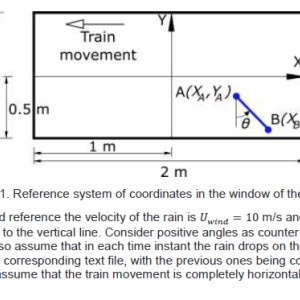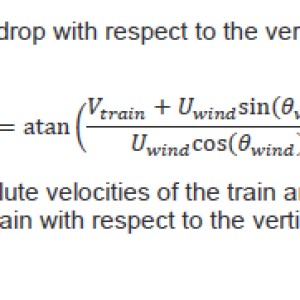Obtaining the absolute velocity of a moving train based on angle of raindrops with respect to vertical axis
The problem is in the files attached.
I have been given the coordinates of the raindrops both start and end.
My question is how do I obtain the angle, and after that how do I arrange the equation to get Vtrain.
 Ice578
Ice578
Answer
- The questioner was satisfied with and accepted the answer, or
- The answer was evaluated as being 100% correct by the judge.
-
Leave a comment if you need any clarifications.
-
Thank you Philip, is ThetaWind always 30 degrees? I still dont quite get how to obtain the angle from the coordinates I was given. However everything you explained makes sense now.
-
In general ThetaWind may not be 30 degrees, but in your problem it is assumed to be 30 degrees.
-
Oh okay, so if I understand the assignment the first step in finding Vtrain should be to find the angle of the raindrop vectors using the coordinates that I was given? Should I do that using the slope?
-
Yes.
-
Great, thank you for the help Philip :),
-
Sorry for asking again Philip, but how would I obtain Vtrain with respect to a fixed refrence, so the absolute velocity of the train?
- answered
- 1648 views
- $4.92
Related Questions
- Integrate $\int \frac{1}{x^2+x+1}dx$
- Help doing a few trig proofs
- Find $lim_{x \rightarrow 0^+} x^{\ln x}$
- Find limit
- What is f(x). I've been trying to understand it for so long, but I always get different answers, I feel like I'm going crazy. Please someone explain it and read my whole question carefully.
- Analyzing the Domain and Range of the Function $f(x) = \frac{1}{1 - \sin x}$
- Solving for two unknown angles, from two equations.
- Show that $\psi:L(E,L(E,F))\rightarrow L^2(E,F)$ given by $[\psi(T)](u,v)=[T(u)](v)$ is a linear homeomorphism


